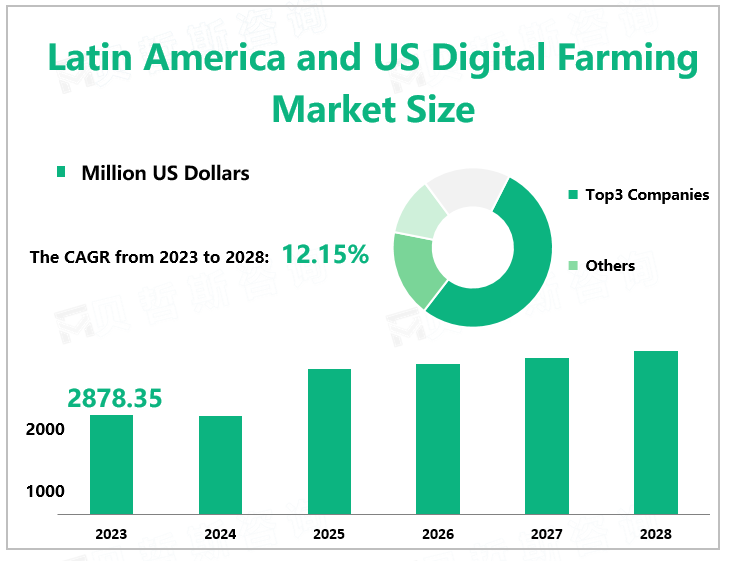Latin America and US Digital Farming Market Overview
According to Global Market Monitor, the Latin America and US digital farming market size will reach $2878.35 million in 2023 with a CAGR of 12.15% from 2023 to 2028.
Digital farming is the use of IT in agriculture and it involves applications of connected machinery and other digital agriculture technologies. Digital farming is used to improve overall farm production and financial performance and help farmers boost their productivity using advanced digital technology.
As the Population Continues to Grow, the Demand for Food Will Further Expand.
FAO predicts that the world's 9.6 billion people need 70% of grain growth in 2050. Due to the growing population and rising incomes, the demand for food is expected to continue to expand. By 2050, the cereals for food and animal feed are expected to reach about 3 billion tons. The growing demand for quality crops is also a major factor in farmers' adoption of digital farming solutions in their fields to increase farmland productivity.

Continuous Development of Key Technology in Digital Agriculture
A key technology underpinning digital agriculture is sensor technology and the Internet of Things. Remote sensors can be deployed on farms to collect data on variables such as temperature, rainfall, humidity, wind speed, livestock tracking, and plant and animal health. This information can be relayed to farmers to save time and cost from manual monitoring, providing greater insight into farm performance and improving farm decision-making. Digital agricultural applications are growing at the stage of learning advanced technologies, and early pioneers have begun to apply new solutions. Climate change and population growth draw worldwide attention to future food supply and also to the implementation of modern technology-based agroindustry processes. In this context, countries whose economies are mostly driven by agriculture (e.g. Colombia) can be pictured as major players in global economies since such countries may provide the world with renewable bio-energy as well as a stable food supply.
At least 96% of farmers own smartphones, although most farmers have not yet adopted smartphones to manage agriculture, but this is only a matter of time. Brazilian agricultural technology companies have increased at least 1.5 times in recent years, which means that the application of agricultural technology will continue to grow to help farmers manage farms more simply.
|
Drivers |
Growing demand for quality crops |
|
Population growth |
|
|
Prevention of pests |
|
|
Active government promotion |
|
|
Robotics are being introduced |
|
|
Development of sensor technology and the Internet of Things |
|
|
Smartphone application |
|
|
Limitations |
Cost and investment rationale |
|
Digital literacy |
|
|
Interoperability of data sets |
We provide more professional and intelligent market reports to complement your business decisions.